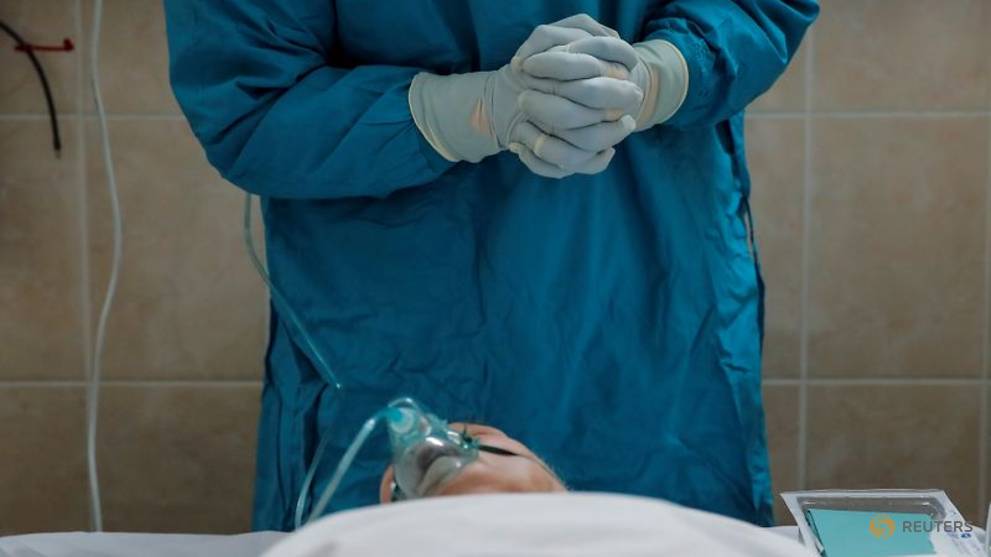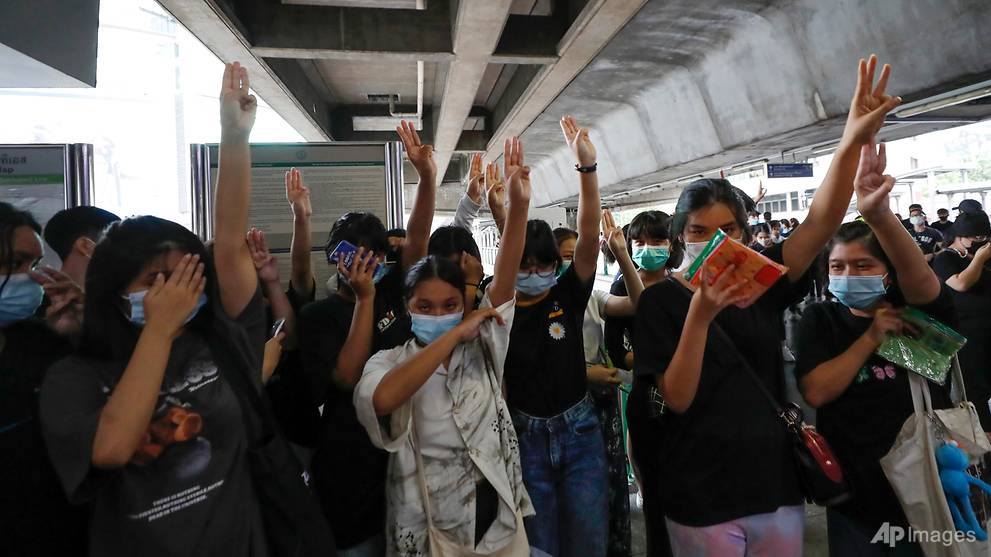SANDAKAN, Sabah and KUALA LUMPUR: Vivian Wong, the Member of Parliament for the port town of Sandakan, Sabah, has received many calls for help this year. In particular, there were mothers who could not afford to feed their babies.
So she approached a non-governmental organisation called Future Alam Borneo. Through crowdfunding, they managed to raise about RM15,000 (S$4,900) to buy 400 packs of infant formula.
“With the pandemic that’s going on, Sabah is definitely facing a big challenge compared to the past years — a bigger challenge,” says the 31-year-old.
READ: Sandakan by-election: Anwar congratulates victorious Vivian Wong
It is the poorest state in Malaysia, faced with inadequate infrastructure, low education levels and a high cost of living for rural folk with stagnant salaries.
With a poverty rate of 19.5 per cent based on the 2019 poverty line, Sabah has almost 100,000 households forming some of the country’s poorest communities.
And now, years of effort to decrease poverty to this level have gone out the window following the arrival of COVID-19. Just this week, Sabah came under a conditional movement control order (MCO) again.
All across the country too, there are stories of hardship as many households struggle to stay afloat because of the pandemic.
According to opinion research firm Merdeka Centre, five to eight per cent of Malaysia’s population will fall into poverty. That is about 1.5 to 2.4 million citizens in addition to the 405,000 households already living below the poverty line.
As the coronavirus crisis drives up poverty levels in Asia for the first time since the 1990s, the programme Insight asks whether vulnerable Malaysians can cope and survive the challenges.
WATCH: Who are Malaysia’s new poor? The COVID-19 recession (6:21)
‘WE FELT UNEASY’
In Sabah, among the families Wong has helped are those from the rural community on Berhala island.
For many of them, their struggles began with the nationwide lockdown that was first imposed in March, which included restrictions on fishermen such as Sadiya Lauddin’s husband.
“Sometimes he could go to sea and sometimes he couldn’t … When he was able to go to sea, he didn’t get that much — around 20 to 30 fish. That’s able to feed us for two days,” says the 50-year-old.
“We felt uneasy because we were already struggling.”
She could not go to work either, but she counts herself lucky that she did not lose her job as a cook-cum-cleaner at a children’s learning centre. Her salary came late, however, and the family found it hard to survive.
“So it was hard to get milk powder because I didn’t have enough money,” recalls the mother of six. “Thankfully, I’ve been granted RM1,600 from the (government’s) cash assistance scheme. But so far, I’ve received RM1,000. The remainder hasn’t come.
“That’s what we’ve used for our daily expenses … Each month, we use a little bit and didn’t spurge it all straightaway.”
Many other Sabahans rely on tourism, directly or indirectly. With natural attractions like Mount Kinabalu, forests and beaches, the state has long been a magnet for tourists. But between January and July, total visitor arrivals decreased by 66.2 per cent.
Sabah halted flights from China as early as Jan 30, in a move to protect its tourism industry, a key economic driver that accounts for 15 per cent of the state’s gross domestic product. But nothing could avert the decline.
“In Sandakan … a few hotels have already announced that they’ll cease their operations — so roughly a few hundred in hand who we know will face unemployment during this period,” says Wong.
The biggest hotel in town, the 290-room Four Points by Sheraton, was the first to shut, in May. It was not the last. One of Sandakan’s oldest hotels, the 54-year-old NAK Hotel, hosted its last guests in June.
Ju Kabing, a former receptionist at the boutique hotel, feels that its closure is “like a big loss for Sandakan”.
The impact is more than just sentimental, however. “The effects of the pandemic haven’t been easy, especially for us to find a new job,” he says.
READ: 'Help us get back our jobs': Rebuilding tourism sector a hot button issue in Sabah state election
THE NEW POOR
When unemployment in Malaysia increased to 5.3 per cent in May, it was the highest since 1989. The number of unemployed persons rose by 47,300 to 826,100 individuals. In August, the rate was 4.7 per cent.
The pandemic has affected more people than just that, however.
“We were able to carry out a survey, and we did find that as many as one half … of the workforce suffered a loss of income, and some suffered the loss of their jobs,” cites Merdeka Centre executive director Ibrahim Suffian.
READ: ‘Never too old to learn’: Malaysian PMETs chart new career course as COVID-19 disrupts livelihoods
Take, for example, Fakaruddin Jasmi, a 43-year-old mechanic in Bukit Beruntung, about 47 kilometres north of Kuala Lumpur. He used to work at a car factory before he left to pursue his dream of running an automotive workshop.
A year after his wife died of cancer, and despite the difficulty of raising six children on his own, he managed to start his business in his township. The timing could not have been worse.
Just a month after his shop opened, Malaysia was placed on lockdown. The strict measures left businesses like his hanging by a thread.
“Before the lockdown, I could earn around RM2,000 (a week). The lowest would be around RM800. But during the lockdown, my income was zero,” he recalls. “The effect was really painful … We didn’t have any prospects for the workshop.”
His finances became a “huge challenge” for him, and he now falls into the category of the new poor in Malaysia — under the revised national poverty line of RM2,208 for monthly household income.
READ: Malaysia has raised its poverty line by more than 100%. Where do things go from here?
Even as his life went from bad to worse all of a sudden, he thought he could “take care of things” himself.
“Even though I’m a single father, I felt that I could make it,” he says. “But at that time, I was at my lowest point, and I couldn’t do anything.”
A friend of his then approached the Darul Jariyah Welfare Association about his situation. The organisation delivers aid to people in need, and his case has “moved” the woman who runs it, Jalijah Awang Kenit.
“He’s a loving husband, and it’s hard for him to be away from his kids,” she says.
“We have a lot of cases like Fakaruddin’s, but mostly they’re single mums … When it comes to husbands who lost their wives, there aren’t many.
“For some cases, we’d help once a month (or) temporarily. We help (to send food to) Fakaruddin every day.”
There may be many families in Bukit Beruntung who need help, so she is always on the lookout for those who have fallen through the cracks, especially during these trying times.
The hardest hit are not only those living below the poverty line, but also the bottom 40 per cent of income earners, the group referred to as the B40.
“It’s the small businesses, because those people rely on income from their businesses. So whatever they get on that day will be their income for the day,” says Jalijah.
“During lockdown, everything had to be halted suddenly. They couldn’t sell anything, and their source of income was halted.”
And once again, as with Sabah, a conditional MCO has been imposed on Kuala Lumpur, Putrajaya and Selangor from this week.
HOW FAR WILL GOVERNMENT EFFORTS GO?
The pressure on low-income households will continue to mount so long as the health crisis prevails. But to help minimise their suffering and keep the economy going, the government has unveiled stimulus packages totalling RM305 billion.
They are part of a series of fiscal measures to cushion the impact of the coronavirus pandemic on both business and households, with the economy expected to contract between 3.5 and 5.5 per cent this year.
READ: Malaysia economy contracts 17.1% in 2nd quarter, worst slump since 1998 financial crisis
Among the various plans, Institute for Democracy and Economic Affairs research manager Wan Ya Shin cites the wage subsidy programme as an “effective” way of reducing employment loss and helping businesses sustain themselves during this time.
While these economic packages have been valuable, and the government has devised other assistance programmes and cash handouts, the benefits have not been fully felt among those who fall outside the scope of formal employment.
WATCH: The full episode — Can Malaysia's new poor cope in the post-pandemic era? (49:48)
For those who are not registered with the mechanisms through which aid can be disbursed efficiently, specific outreach efforts are required so that they do not go completely unnoticed.
Kechara Soup Kitchen, for example, provides food for the homeless in Kuala Lumpur, and its operations director, Justin Cheah, has seen some new faces on various corners of the streets.
“The situation before the pandemic was very different. We were seeing a lot of poor people, no doubt about it. But after the MCO, we’re seeing more and more people … struggle,” he says.
The restrictions that have been imposed to contain the pandemic have also made things worse for some of the familiar faces, for example Adnan, who has been living on the streets for more than 15 years.
He fixes fans for a living and uses whatever little money he gets to buy food. But the repair jobs have become scarce.
He has children, but old wounds and a mix of pride and shame prevent him from reaching out to them for help. “(He) doesn’t want to burden the family,” says Cheah.
The authorities are now working on an “amazing” initiative to co-ordinate the different types of community help, products and services that are needed, according to Hartini Zainuddin, co-founder of Yayasan Chow Kit, a crisis and drop-in centre for children.
“(They’re) getting together all the different NGOs working in that space and sort of forming clusters,” she says. “You have, like, a food security cluster or … livelihood cluster or you have health clusters.
“So they’re able to see which NGO is doing what (and) where, and where the gaps are, and then get other people to come in and do it. But I think we’re still working on it.”
In terms of reducing poverty, Malaysia has done “quite well”, believes Wan, who cites economic growth as a “big factor”. But she also agrees that “some segments of the society are being left out of social assistance”.
“The mechanisms that we have aren’t holistic enough to … target everyone,” she notes.
As for the COVID-19 pandemic, Ibrahim believes that the government, for the most part, “realises the extent of the problem”. “They’re trying to be quite prudent in the way that they’re trying to address it,” he says.
“They haven’t turned on the taps in a very great way, flooding the country with cash. They’ve done it very judiciously in stages, in order to counter specific effects of the pandemic in parts of the economy.”
The question that remains is “whether or not all of these efforts are enough to counter factors that are beyond the control of the Malaysian government”.
One is the global economy; the other he cites is the “strength” of Malaysia’s trading partners to address the pandemic in their respective countries and resolve their economic woes too.
The poor in Malaysia can only hope the recovery comes sooner rather than later.
Watch the full Insight episode here, and for more on poverty in Asia, read how poverty runs a thread through Indonesia as COVID-19 puts millions on the brink. The programme airs on Thursdays at 9pm.
https://news.google.com/__i/rss/rd/articles/CBMidmh0dHBzOi8vd3d3LmNoYW5uZWxuZXdzYXNpYS5jb20vbmV3cy9jbmFpbnNpZGVyL3Bvb3ItbWFsYXlzaWEtY29wZS1jaGFsbGVuZ2VzLXBvc2VkLWNvdmlkLTE5LXBhbmRlbWljLXBvdmVydHktMTMzMDMwNzDSAQA?oc=5
2020-10-17 22:19:30Z
52781122401331



